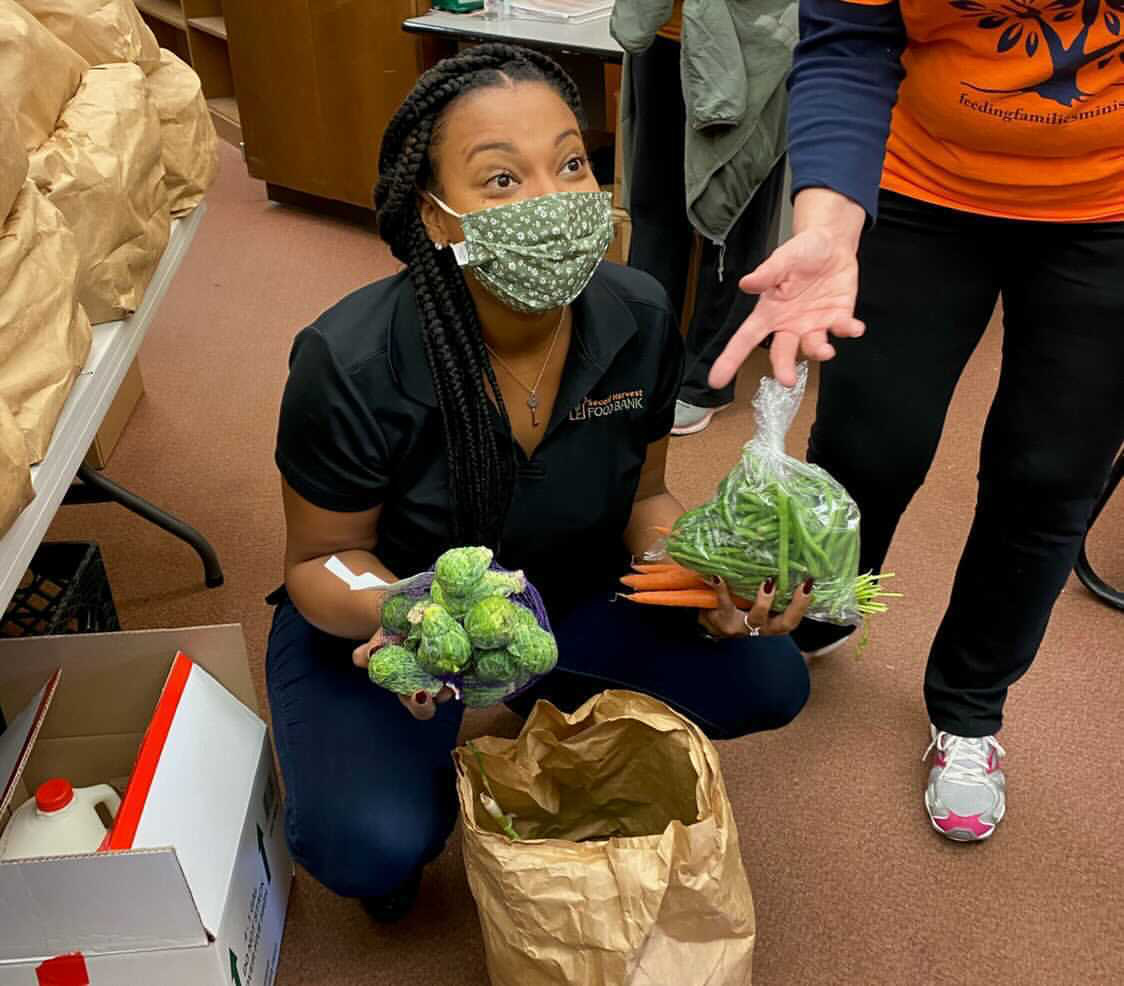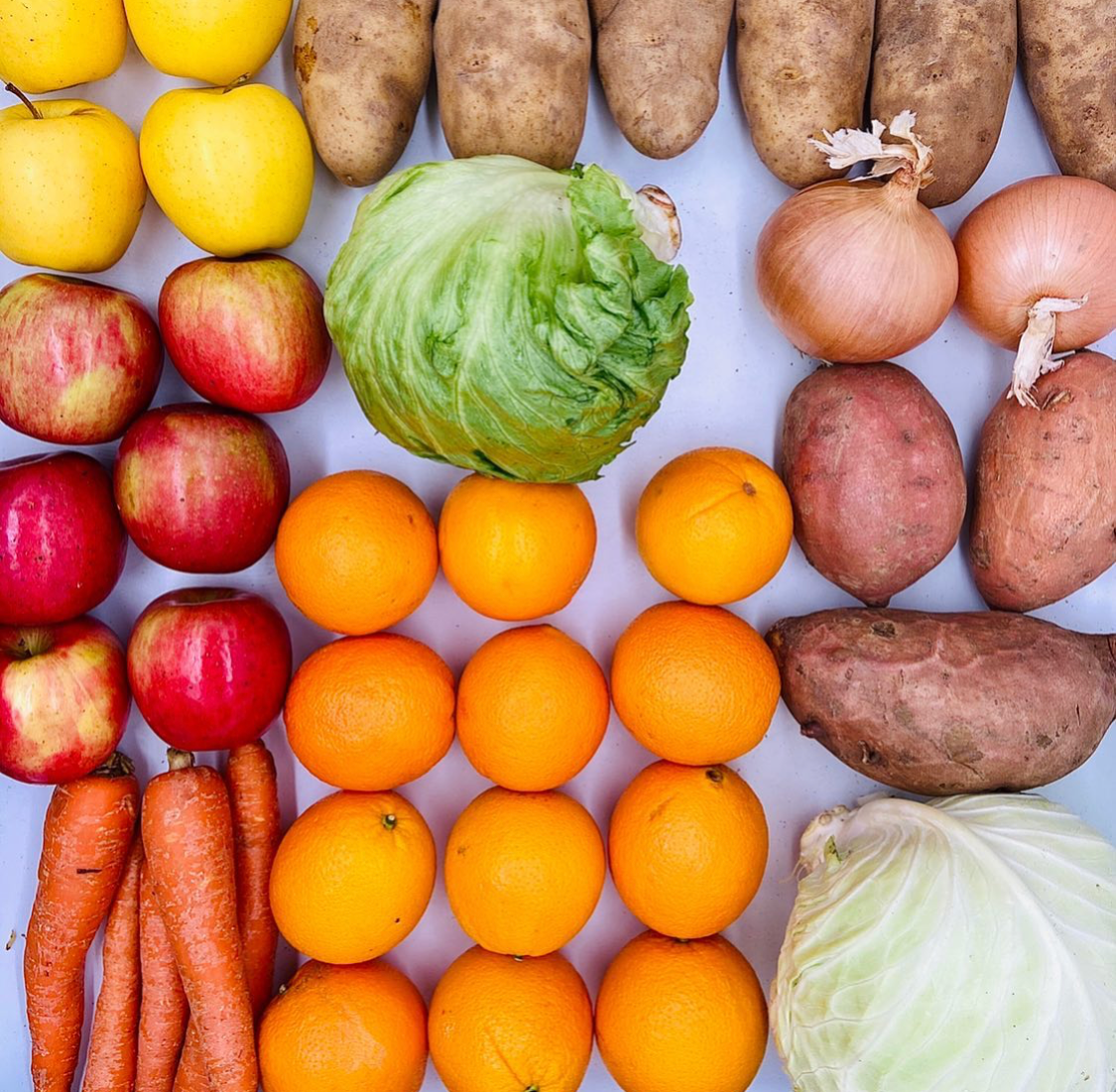May 28 marks World Hunger Day, bringing awareness to the 690 million people across the world who lack reliable access to food. At the same time, 1.4 billion tons of food goes to waste each year – an amount that could feed as many as 2 billion people. Feeding America recognizes that reducing food waste is a powerful opportunity to help not only end hunger but save the planet. In fiscal year 2020, our network rescued 4 billion pounds of safe, nutritious food that would otherwise have been thrown away, and we aim to rescue 5 billion pounds of food annually by 2025.
Feeding America network members have developed innovative ways to rescue food and feed their communities. Below, Jane Clements, Executive Director of Feeding Pennsylvania (a statewide association of nine Feeding America-affiliated food banks), and James DeMarsh, Director of the Mid-Atlantic Regional Co-Op (MARC), discuss the critical work they are doing to simultaneously reduce food insecurity and food waste.
How does food waste impact us, from the environment to our economy?
Food waste has a huge environmental and financial impact on our communities. The $218 billion worth of food wasted in the United States each year generates harmful greenhouse gas emissions, further packs our landfills, and wastes fresh water. There is an opportunity to rescue food to assist people experiencing hunger and benefit the agricultural community – an opportunity that we have started to leverage. Our food banks have prioritized forging strong partnerships with farmers, processors, and manufacturers to access surplus (or “extra”) food, including produce, meat, eggs, and dairy. Also, Feeding Pennsylvania has successfully advocated for state and federal funding to support the harvesting, processing, packaging, and transporting of surplus food; the reimbursement of our agricultural partners who supply the surplus food; and the distribution of rescued food to families facing hunger.
What is the Mid-Atlantic Regional Co-Op (MARC), and what is its role in food rescue efforts?

Katarah Jordan, Director of Second Harvest Food Bank of Lehigh Valley and Northeast Pennsylvania
The Mid-Atlantic Regional Cooperative (MARC) operates under Feeding Pennsylvania, sourcing, boxing, and shipping produce to 29 Feeding America network food banks in the Mid-Atlantic and Northeast regions. The MARC’s mission is to support our member food banks in ensuring they have enough produce to help keep plates full. We firmly believe in the positive impacts that fresh fruits and vegetables can have in maintaining and improving the health of folks who face hunger.
When the MARC was formed in 2017, the program’s primary value was sourcing and distributing produce for members food banks. For example, a food bank that distributes a truckload of produce per week previously may have had to choose between a few basic items because of the difficulty of accessing a variety of produce in needed quantities. The MARC is able to ship 6-15 types of produce to food banks during any given delivery, helping to provide food bank clients with an array of offerings they can take home. As the MARC has grown, we have offered more services to members, including assisting them with coordinating trucking and logistics, assisting with product sourcing, and forming partnerships to steward donor relationships.
Growers, food businesses, and food banks face challenges that lead to food waste. What are those challenges, with respect to distributing and storing food, and how do Feeding Pennsylvania and the MARC work to alleviate them?
Because our nation’s food supply chain operates in a way that attempts to guarantee that shelves are always full at stores, no matter the time of year, often there is “too much” food in the food supply chain. Food banks have been rescuing surplus food from farmers, wholesalers, and retailers for decades, but there have always been challenges with ensuring food is rescued quickly and enough cold storage is available to keep rescued food fresh and ready to distribute. Feeding Pennsylvania and the MARC are the go-to for food producers who experience oversupply and food banks that need fresh food, but may not have the resources or expertise to manage large-scale produce collection, storage, and distribution.
How has the COVID-19 pandemic affected the impact and mission of Feeding Pennsylvania and the MARC?

Produce from the MARC
At the onset of the pandemic, food banks quickly pivoted to new delivery models, from providing food in boxes to drive-thrus. With funding from Feeding America, Feeding Pennsylvania was able to pivot, too, helping us serve 5.5. million people during the first 3 months of the pandemic (our food banks usually serve 2 million people annually).
Specifically, the MARC took on the task of engaging third-party contractors to assemble mixed-produce boxes for food bank visitors at drive-up and other direct distribution events that became common during the pandemic. We used this experience to inform our winning bid for the United States Department of Agriculture’s Farmers to Families Food Box Program, allowing us to distribute over 458,000 mixed-produce boxes to member food banks at no cost. Since the pandemic began, we have distributed over 1.98 million mixed-produce boxes, or 39 million pounds of produce.
Thinking beyond COVID-19, what are Feeding Pennsylvania’s goals for continuing to tackle food waste and food insecurity?
COVID-19 demonstrated the significant role of our state association in coordinating food donations and purchases and ensuring that food banks have access to a variety of food items. We learned how a convenient resource like the MARC can quickly be transformed into an indispensable asset. Seeing the impact that we were able to have during this crisis shows us the power of regional collaboration when it comes to fresh produce distribution.
Our goals beyond the pandemic include continuing to tailor our services to the unique needs of each food bank. We hope to make mixed-produce boxes and other produce repacking services a more permanent part of our services. Also, Feeding Pennsylvania will continue to look for ways to partner with food producers to capture more food that might otherwise go to waste, and explore food processing procedures (e.g., canning green beans) to find ways to extend the life of food we rescue.
Interested in learning more about sustainable solutions to hunger? Check out Feeding America’s resources on tackling food waste and sustainability.



